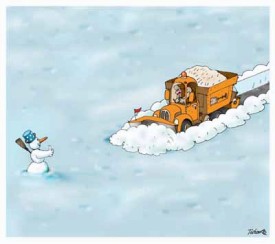HRW slams Albania for failure to investigate war crimes case
Human Rights Watch has slammed the Albanian authorities in Tirana for failing to investigate properly allegations that the Kosovo Liberation Army (KLA) abducted and transferred prisoners to Albania after the 1998-1999 Kosovo war.
(KosovoCompromise Staff) Friday, April 17, 2009
According to Carla del Ponte and BBC, the KLA maintained secret prisons in Albania and that some of the detainees were abused and killed. Approximately 400 persons, abducted after the end of the war in Kosovo remain missing. Most are Serbs.
The allegations first became public in 2008, when Carla Del Ponte, former chief prosecutor of the International Criminal Tribunal for the former Yugoslavia (ICTY), published her book, "The Hunt: War Criminals and Me."
Human Rights Watch wrote letters to Albanian Prime Minister Sali Berisha and Kosovo Prime Minister Hashim Thaci on April 4, 2008 to request that they open investigations into the credible allegations. As of this writing, neither government has replied, nor have top officials in both places publicly rejected Del Ponte's claims as unsubstantiated and libelous.
The Serbian War Crimes Prosecutor Vladimir Vukcevic has launched an investigation. The Albanian authorities have rejected multiple requests from Vukcevic to travel to Albania to pursue his investigation.
In June 2008, the Parliamentary Assembly of the Council of Europe nominated Dick Marty as rapporteur to investigate the fate of missing Serbs allegedly transferred to northern Albania after June 1999.
In February 2009, HRW raised the issue in person with Albanian Prime Minister Sali Berisha, Deputy Prime Minister Gene Pollo, and other members of the government and National Assembly. Human Rights Watch received an offer to view the copy of the State Prosecutor's file to see what steps the prosecutor had taken in the past. Human Rights Watch formally requested to view the file on March 4, 2009, but, to date, the file has not been provided.
The United Nations Human Rights Committee has made clear in its general comment 31 that article 2 of the ICCPR imposes on states a positive obligation to ensure that those responsible for human rights obligations are brought to justice. The failure to do so can "in and of itself give rise to a separate breach of the Covenant."
According to Del Ponte, the ICTY received information from "credible journalists" in 2003 that individuals in Kosovo had abducted and transported between 100 and 300 persons from Kosovo into northern Albania after June 12, 1999. The information was consistent with and corroborated the information that the tribunal had developed in house. Human Rights Watch viewed the information the ICTY obtained from the journalists and considers it credible: seven ethnic Albanians who served in the Kosovo Liberation Army, interviewed separately, gave details about participating in or witnessing the transfer of abducted Serbs and others prisoners from Kosovo into Albania after the war.
According to the journalists' information, the abducted individuals were held in warehouses and other buildings, including facilities in Kukes and Tropoje. According to some of the sources, in comparison to other captives, some of the younger, healthier detainees were fed, examined by doctors, and never beaten. These abducted individuals - an unknown number - were allegedly transferred to a yellow house in or around the Albanian town of Burrel, where doctors extracted the captives' internal organs. These organs were then transported out of Albania. Most of the alleged victims were Serbs who went missing after the war. But others were women from Kosovo, Albania, Russia, and other Slavic countries.
According to the information obtained by the ICTY, the bodies of some of the abducted individuals were buried near the yellow house and a nearby graveyard about 20 kilometers south of Burrel. Investigators from the tribunal and the UN Mission in Kosovo (UNMIK), accompanied by an Albanian prosecutor, inspected the house in February 2004. The house had been painted white but, in a photo of the investigation site, a yellow strip was visible at the house's base.
According to Del Ponte, near the house investigators found medical equipment used in surgery. Using a chemical spray, the team found evidence of significant blood stains on the walls and floor of one room, except for a clear six-foot by two-foot rectangle on the floor. Two people present during the visit of the ICTY and UNMIK investigators to the house near Burrel have confirmed Del Ponte's account to Human Rights Watch. Human Rights Watch also obtained a copy of UNMIK's official report from the February 4-5, 2004 investigation, titled "Forensic Examination and Assessment in Albania," which largely corroborates Del Ponte's claims.
An ICTY spokesperson confirmed on April 16, 2008 that ICTY and UNMIK investigators had looked into the allegations and visited the house near Burrel, but asserted that they "could not substantiate the allegations and had no further basis on which to proceed in relation to [the tribunal's] jurisdiction."
On April 9, 2009, BBC radio and television released an in-depth investigative report that corroborated many of the allegations first raised in Carla Del Ponte's book. Additional findings about KLA detention camps in Kosovo and Albania were published by the Balkan Investigative Reporting Network (BIRN). According to the reports, based largely on interviews with former KLA members, the KLA maintained a detention facility in the Albanian town of Kukes, and at least 18 captives were killed there, including Albanians and Serbs from Kosovo. The reports were unable to provide conclusive evidence of organ trafficking.






